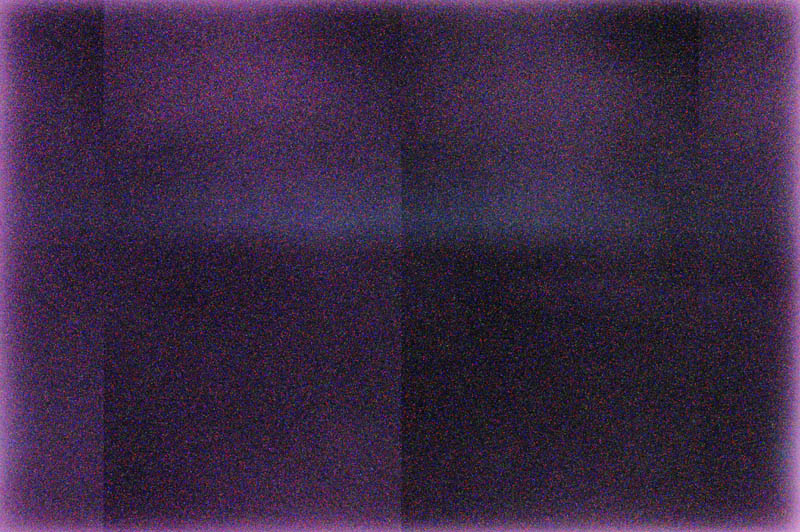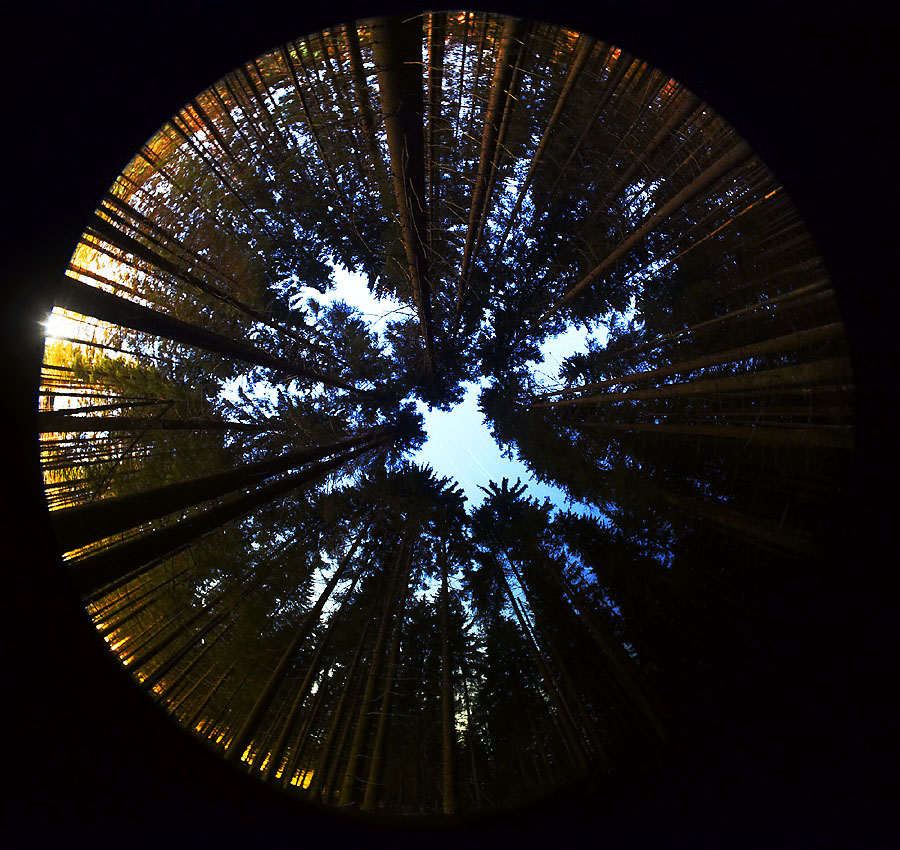| Nikon D3 Digital Camera Reviewed |
|
|
| by Bjørn
Rørslett |
|
6.
Long Exposures
The last stand of film has
been the long-exposure domain, in which digital simply hasn't
been competitive. The D2H and even more the D2X made some
encroaches to that bastion. What about the new D3? Surely one
would expect it to be perfect for long exposures, given its
phenomenal low noise levels.
The D3 offers a "B (Bulb) "
setting, so one presumes it can be used for long exposures.
Provided you can supply sufficent power to it, the D3 indeed will
happily run for several hours. The results, however, indicate that D3 never was
optimally designed for this kind of work.
Without the long-term noise reduction (LNR)
activated, even a short 60 secs exposure at 3200 ISO will give
very visible noise. Set to 200 ISO, you could achieve good
results up to a few minutes before colour noise became
troublesome, or up to 10 minutes if the ambient temperature is
around the freezing point or lower. Anything longer and LNR must
be ON. In fact, this option should always be activated since the
camera decides for itself whether using LNR has any merit.
The camera tracks the exposure
time even on a "B" setting with high accuracy (ticks of
100 millisec duration), and uses this information to run a second
"blank" exposure internally to cancel out noise accrued
within the first exposure. The second stage should last exactly
as long as the first, actual image-taking stage, to the 1/10
second in fact, and the duration is duly logged in the EXIF
header. The D3 evidently uses a 16-bit counter to count time
steps of a "Bulb" exposure and eventually this counter would overflow. Since the noise-reduction circuitry depends on
knowing the exact exposure time, this means D3 would cease to do NR after 109
minutes 13.5 seconds (= 65,535 steps each of 1/10 sec duration). This is the same bug that occurred with the D2H in
its time, but seemed to be corrected on the D2X to reappear with
the D3. A strange pattern of evolution indeed.
You might object to the idea
of a camera spending half of the time in a shooting session
running its noise reduction program. However, since unlike film
there is no reciprocity error involved, the practical importance
of the NR delay is less significant than you might think. This
simply means that you will get twice the output for twice the
exposure duration, something film cannot match at all at
long-time exposures. In fact, reciprocity error will cut the
effective speed of a 200 ISO film to a level below that of the D3
for any exposure longer than one minute. So, if you set a D3 and
a film-based camera side by side and tripped the shutters
simultaneously for a long exposure (but note the 16-bit bug
caveat), the chances are that you would finish first with D3,
even with its NR delay.
 |
| Long
exposures may fail since the internal 16-bit counter for
exposure length eventually overflows This is the output from Nikon D3, set @ 3200
ISO with noise reduction on, after an exposure of 5
hours. The NR stage lasted less than one-third of that
period, due to the overflowed 16-bit counter, so the
noise is way beyond the acceptable level. No typical
"amp glow" is in evidence, though.
The subcomponent layout of the
imager becomes visible in this test shot. Please note
that the segments corresponding 5:4 cropped mode are
clearly indicated. One might also wonder whether the
imager comprises several smaller individual chips.
When duration was kept to
approximately 1 hour instead ,even 3200 ISO in
conjunction with NR on gave clean images.
|
If you constrain the exposures to be well
within the danger zone causing the counter to overflow, and
remember to turn on long noise reduction, the D3 can deliver
clean enough image files. An example of this is given below.

|
Morning has broken
© Bjørn
Rørslett/NN
Nikon D3, 8 mm f/2.8
Fisheye-Nikkor, f/5.6, 200 ISO, 109 minutes exposure with
NR on (the NR stage not completed due to battery failure,
so additional NR had to be conducted during post
processing)
|
Long exposures with street lights or
similar strong point light sources inside the frame, indicated
that D3 gracefully handled the overexposure bound to happen at
these highlights. In fact, the inevitable clipping of the
highlights seemed better controlled as exposure extended. I'll
have to do more research in this field, but there seems to be a
remarkable progress here compared to film (which will blow
out highlights and the glare from them will diffuse into the
surrounding shadows as well).
However, the price to be paid for all this
long-time wizardry is power, or rather battery, consumption. Lots
of it in fact. Thus at least under a sub-zero Norwegian winter
climate, around 100 minutes exposures seem to be an upper
practical limit because anything longer will completely drain even a
fully-charged battery pack. I have
tried so should know. Do remember the need for conducting a
noise-reduction stage afterwards and that will consunme power as
well. Unfortunately, due to the 16-bit counter bug, you can't
just hook up the D3 to an EH-6 power supply and let the camera
run for many hours on end, because the noise level will be
totally unacceptable.
If you are into astrophotography and the
photography of star trails, stacking single shorter exposures is
a proven approach that also would circumvent the reported
limitations of the D3's handling of long exposures. But
"long exposures" entail far more than just those
applications.

